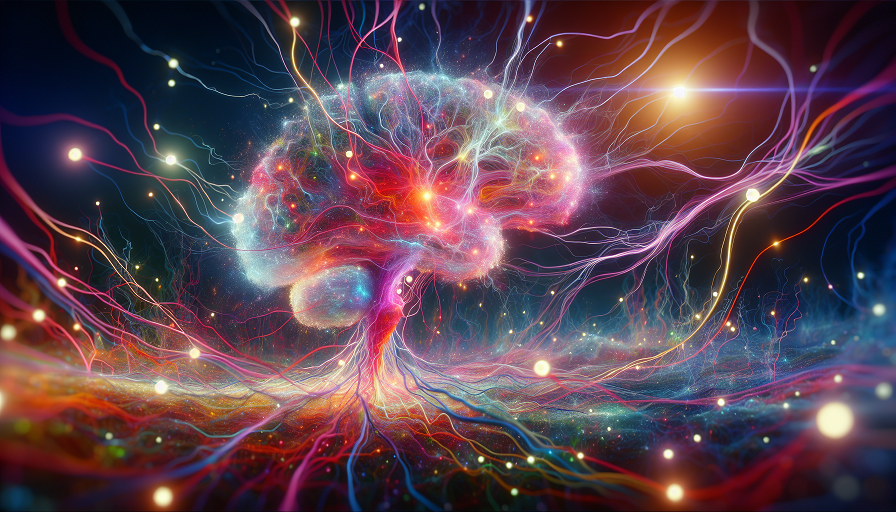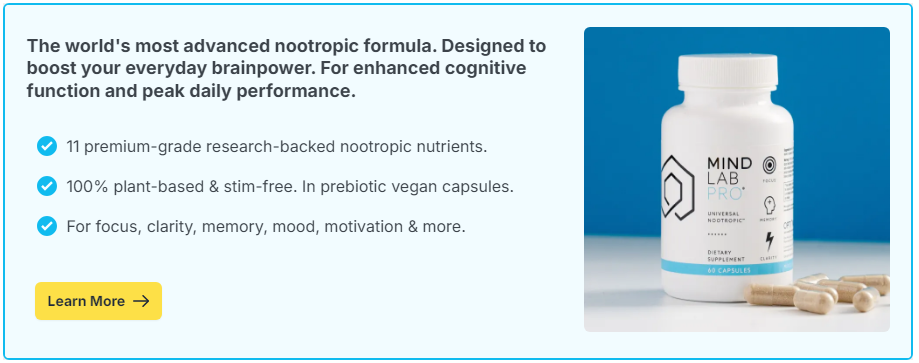
From the first sip of morning coffee to the satisfying bite of a sweet dessert, taste colors our daily experience in vivid, emotional ways.
But what if flavor does more than simply bring pleasure?
What if it quietly shapes how we think, remember, and even create?
Emerging research suggests that the brain’s responses to taste go far beyond the tongue — influencing cognition, emotional regulation, memory formation, and even intellectual performance in subtle but significant ways.
Understanding how flavor interacts with brain function offers fascinating insights into the deep, often overlooked relationship between palate and mind — and how mindful eating could become a cognitive advantage.
Contents
- The Brain’s Rich Relationship with Flavor
- Flavor’s Influence on Memory and Learning
- How Flavor Affects Mood and Cognitive Flexibility
- Neuroscience Research Linking Flavor and Brain Performance
- Brain Supplements: Supporting Cognitive Nutrition and Flavor Interaction
- Practical Ways to Harness Flavor for Better Brain Performance
- When Flavor Can Impair Cognitive Function
- Real-World Examples: Flavor in Creative and Intellectual Pursuits
- Savoring Intelligence
The Brain’s Rich Relationship with Flavor
Taste is a multi-sensory experience, blending chemical, neural, emotional, and cognitive processes into a single, seemingly simple sensation.
How the Brain Processes Flavor
- Gustatory Cortex: Processes basic taste qualities like sweet, salty, sour, bitter, and umami.
- Olfactory Cortex: Smell is tightly integrated with taste, creating flavor complexity.
- Orbitofrontal Cortex: Evaluates the reward value of flavors and integrates sensory, emotional, and cognitive inputs.
- Hippocampus: Links flavor experiences with autobiographical memory formation.
- Amygdala: Tags taste experiences with emotional valence (pleasure, disgust, comfort, aversion).
When you taste something, you don’t just savor a chemical — you activate a rich cognitive and emotional network that reaches deep into your mind’s architecture.
Flavor’s Influence on Memory and Learning
Flavor experiences are powerful memory anchors — a phenomenon every nostalgic bite of a childhood favorite easily proves.
Key Effects on Cognition
- Emotional Encoding: Pleasant or intense flavors heighten emotional salience, strengthening memory formation and recall.
- Contextual Learning: Consuming certain flavors during learning can create associative memory boosts when the same flavor is later re-experienced (a phenomenon called flavor-context reinstatement).
- Novelty Activation: Unfamiliar or surprising flavors stimulate dopamine release, enhancing neuroplasticity and readiness to learn.
Your brain doesn’t just remember what you studied — it remembers how the environment (including flavors) made you feel while studying, linking emotional state to information retention.
How Flavor Affects Mood and Cognitive Flexibility
Because flavor powerfully impacts emotional states, it also indirectly influences cognitive flexibility, resilience, and problem-solving ability.
Examples of Mood-Flavor Interaction
- Sweet Flavors: Typically associated with positive mood boosts, social affiliation, and comfort, promoting relaxed creative thinking.
- Bitter Flavors: Can trigger vigilance, caution, and analytic thinking modes — useful for detailed, critical work when consciously channeled.
- Umami Flavors: May promote satisfaction and emotional grounding, supporting sustained focus and task perseverance.
Choosing certain flavor profiles intentionally could help set the cognitive “weather” for specific mental tasks or emotional needs.
Neuroscience Research Linking Flavor and Brain Performance
Scientific studies increasingly highlight specific connections between flavor experiences and brain function.
Key Findings
- Chewing Gum Studies: Research shows that chewing flavored gum can enhance attention, memory, and task switching ability, especially during long cognitive tasks.
- Flavor-Cued Retrieval: Students who chew a specific flavor of gum while studying, and then again during testing, often recall material more effectively.
- Flavor and Stress Modulation: Pleasant tastes can dampen cortisol levels and support executive functioning under pressure.
Far from trivial, your taste experiences are quietly tuning cognitive gears behind the scenes.
Brain Supplements: Supporting Cognitive Nutrition and Flavor Interaction
Some individuals complement flavor-conscious cognitive strategies with nootropic supplements designed to enhance neural resilience, focus, and emotional balance.
Ingredients such as citicoline, omega-3 fatty acids, and Rhodiola rosea are studied for their potential to support neuroplasticity and emotional regulation — enhancing the mind’s ability to leverage sensory inputs like flavor effectively.
Professional advice ensures personalized and safe supplementation choices.
Practical Ways to Harness Flavor for Better Brain Performance
Flavor isn’t just for fun — it can be a subtle tool for mental optimization when used with mindfulness and strategy.
Flavor-Based Cognitive Strategies
- Pair Flavors with Tasks: Use specific, distinctive flavors during focused work sessions to create contextual memory cues.
- Flavor Variety for Mental Freshness: Rotate flavors between tasks to reduce monotony and enhance cognitive flexibility.
- Use Flavor to Modulate Mood: Choose comforting flavors when stressed, bright or novel flavors when needing creative stimulation.
- Mindful Eating Breaks: Use flavor-rich, nourishing snacks to reset attention and emotional balance during work breaks.
Flavor isn’t just pleasure — it’s a palette your brain uses to paint richer, sharper cognitive landscapes.
When Flavor Can Impair Cognitive Function
Not all flavor experiences are beneficial. Some can temporarily impair mental performance if poorly managed.
Potential Pitfalls
- Sugar Overload: Excessively sweet flavors linked to blood sugar spikes can impair attention and memory consolidation.
- Overstimulation: Intense or conflicting flavors may distract cognitive resources, particularly in high-focus tasks.
- Negative Emotional Associations: Flavors tied to bad memories or discomfort can trigger anxiety, blocking cognitive flow.
Mindful flavor selection — tuned to context and cognitive goals — makes the difference between boosting and blunting brain performance.
Real-World Examples: Flavor in Creative and Intellectual Pursuits
Across cultures and disciplines, great thinkers and creators have tapped into the cognitive power of taste, often intuitively.
Examples
- Winston Churchill: Famously chewed on cigars — not just for style, but as a flavor and oral fixation tool that may have supported his intense focus during wartime strategy sessions.
- Salvador Dalí: Frequently incorporated strong flavors into his bizarre artistic rituals, blending sensory provocation with creative stimulation.
- Modern Study Hacks: Many students now deliberately use distinctive flavors during studying and testing to enhance memory retrieval and mental sharpness.
Flavor has always been more than food — it’s a secret agent of thought.
Savoring Intelligence
Next time you reach for a snack, sip coffee, or savor a rich meal, remember:
You’re not just feeding your body — you’re shaping your mind.
Flavor, when approached with awareness, becomes a bridge between emotion and intellect, between pleasure and performance.
It offers not just nourishment, but the chance to sharpen memory, brighten creativity, and anchor wisdom in the richest soils of sensory experience.
So taste deeply. Think boldly.
And savor the intelligence that grows wherever mind and flavor meet.

